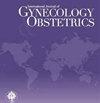Adverse maternal and fetal outcomes among tribal pregnant women suffering from sickle cell disease: A retrospective cohort study in a community-based hospital situated in a tribal block of Gujarat, India
Abstract
Objective
The study presents the risk of the maternal-fetal morbidity and mortality among one of the largest cohort of sickle cell disease (SCD) pregnancies in India and reports the epidemiology of the maternal morbidity.
Methods
This was a retrospective cohort study conducted at Kasturba Maternity Hospital, SEWA Rural, in the tribal area of Gujarat, India. All pregnant women admitted to the Hospital between 2016 and 2021 were screened for SCD, and their maternal-fetal morbidities were recorded throughout the pregnancy. We quantified risk of maternal-fetal morbidity and mortality among SCD, trait and normal pregnancies after adjusting for potential confounders using Poisson and logistic regression.
Results
A total of 24 256 delivered during the study period, with 354 (1.5%) and 4216 (17.4%) suffering from SCD and trait, respectively. After adjusting for potential confounders, the women with SCD pregnancy had higher risk of maternal death (adjusted-odds-ratio [AOR] 13.7, 95% CI: 4.5–42.7), anemia (AOR 6.8, 95% CI: 4.5–10.2), severe anemia (AOR 4.3, 95% CI: 3.3–5.6), preterm delivery (AOR 4.5, 95% CI: 3.6–5.7), cesarean section (AOR 5.5, 95% CI: 4.7–7.0), stillbirth (AOR 3.4, 95% CI: 2.3–5.3), and low birth weight (AOR 3.1, 95% CI: 2.4–39) compared to normal pregnancies. Maternal morbidities occurred throughout the pregnancy; however, the risk was highest during the last month of pregnancy. Pregnant women who had severe manifestation of SCD before the pregnancy were at higher risk of developing maternal morbidities.
Conclusion
We concluded that SCD might be an independent risk-factor for developing maternal-fetal morbidities. The SCD pregnancies with prior severe manifestations must be carefully managed during the last month of pregnancy when the risk is highest.

 求助内容:
求助内容: 应助结果提醒方式:
应助结果提醒方式:


